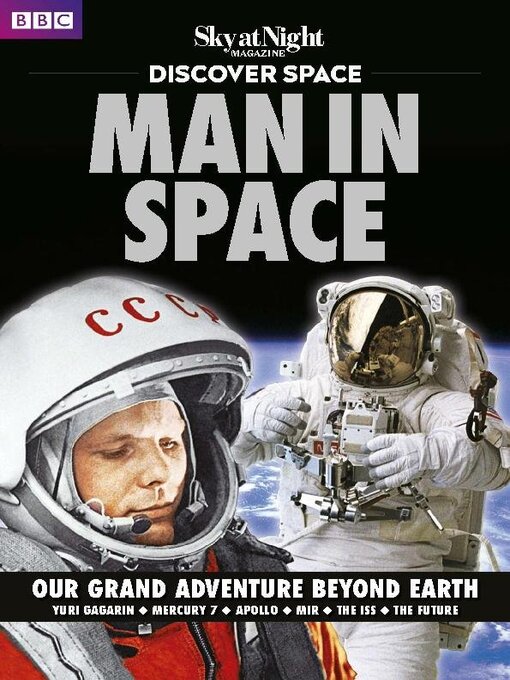On 12 April 1961, Yuri Gagarin became the first man in history to reach space. A huge coup for the Soviet Union, it was the spark that ignited a new Space Race – one that would ultimately lead to the Moon. Discover the fascinating story of over 50 years of manned space exploration in this lavish, 116-page special issue. Featuring articles by leading spaceflight writers and packed with rarely-seen photos of astronauts and their spacecraft, Man In Space takes you from the early Vostok, Mercury and Gemini missions to the International Space Station and beyond.
INTRODUCTION
FIRST STEPS • THE LAUNCH OF Hitler’s devastating V-2 missiles in World War II and Yuri Gagarin’s spaceflight were separated by just 17 years. In the intervening period, both the US and Soviet Union raced to adapt German technology to produce ballistic missiles capable of striking the other’s shores. But these missiles were also proved powerful enough to carry satellites, and men, into space
The Rocket men • Wernher von Braun and Sergei Korolev dreamed of sending rockets to the stars. Backed by military paymasters, each produced a succession of firsts, ultimately propelling human beings into orbit
Early days • The Soviet rocket programme flourished in the late 1950s, setting the stage for Gagarin’s epic flight
First man in space • The life and times of Yuri Gagarin – the first human being ever to travel beyond Earth’s atmosphere
IN PICTURES: YURI GAGARIN FIRST MAN IN SPACE
FLYING SOLO • THE UNITED STATES may have lost the race to put a man in orbit but it fought back to enter the Space Race in earnest. The early years of the 1960s saw a game of one-upmanship between the superpowers as they achieved ever more ambitious feats of engineering. In the process, human endurance was pushed to the limit and astronauts became firmly established as superstars
The race to space • NASA’s Mercury missions saw astronauts carry out experiments in orbit, while the Soviet Union’s Vostok programme set new space records
Meet the Mercury 7 • America’s first superstar astronauts proved they had the ‘right stuff’
IN PICTURES: THE SPACE RACE 1961-1963 VOSTOK AND MERCURY
THE NEXT STEP • AFTER THE SUCCESS of Vostok and Mercury, both the US and Soviet Union had their eyes firmly fixed on the Moon. To get there, they would need to send spacecraft with multiple crew members into orbit, demonstrate docking manoeuvres and practice spacewalks. The rewards were great but so were the risks, as both sides were about to find out…
Teaming up in space • Gemini took two astronauts into orbit and Voskhod three. The Soviets made the first spacewalk but there was trouble ahead
IN PICTURES: THE SPACE RACE 1964-1966 VOSKHOD AND GEMINI
TWO SIDES OF THE MOON • NEIL ARMSTRONG’S HISTORIC step on the lunar surface in July 1969 marked the end of an era, with America having surpassed the Soviet Union’s earlier triumphs. The race to the Moon had been fraught with difficulty and disaster as both superpowers pushed know-how and technology to the limits. The Soviet Union developed its most powerful rocket but it was too little, too late
Race to the Moon • Popular culture celebrates America as the outright victor, but history tells of a far closer contest
Apollo the missions • Beginning with tragedy and ending in triumph, the Apollo missions are the pinnacle of mankind’s space adventure
IN PICTURES: MOON MISSIONS 1968-1972 THE APOLLO PROGRAMME
LIVING IN SPACE • WITH THE MOON missions now over, long-duration stays in Earth orbit became the new focus of space programmes either side of the Cold War divide. NASA’s Skylab was a glorious last hurrah for the Saturn V launcher that had carried men to orbit and beyond. But it was the Soviets who...

